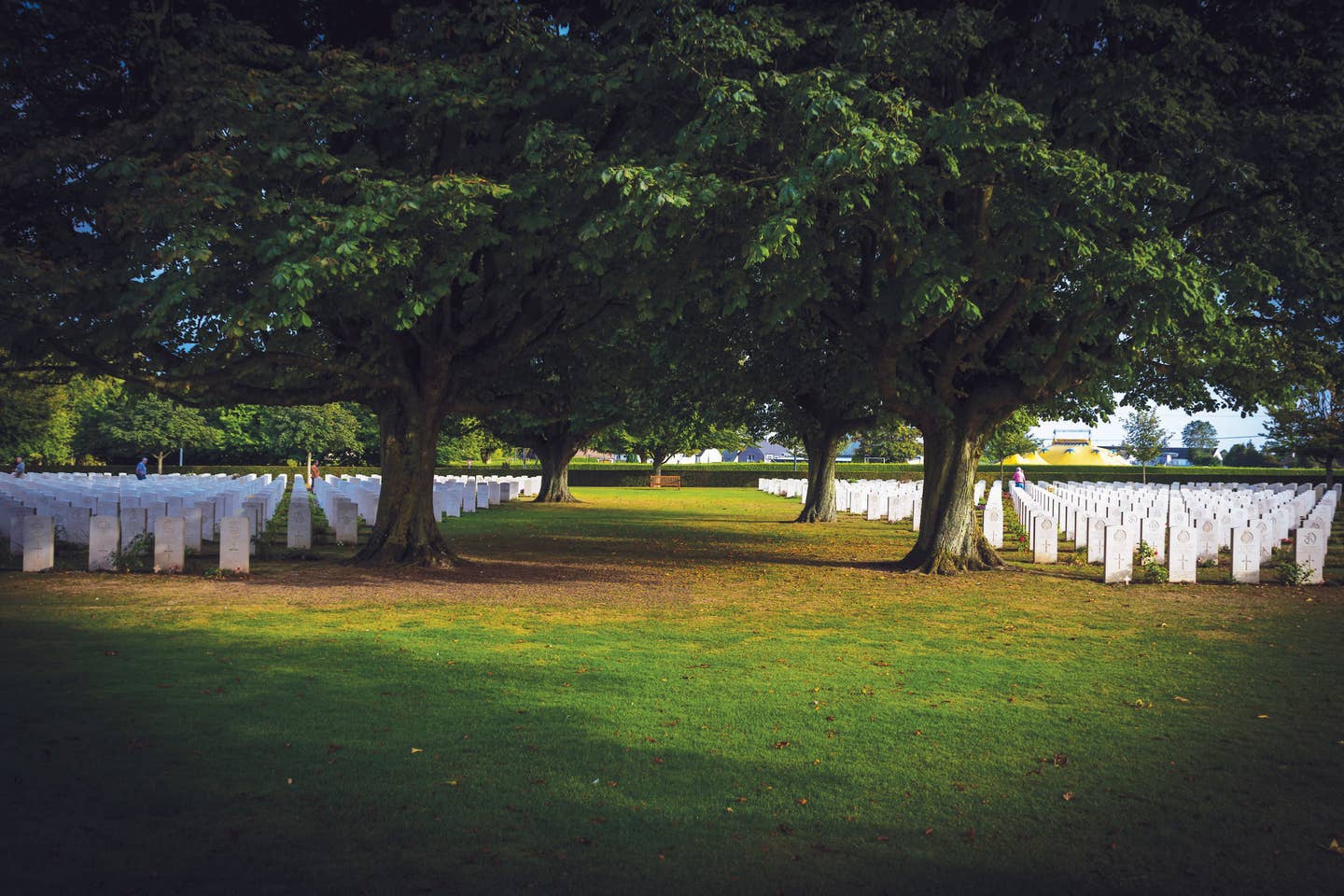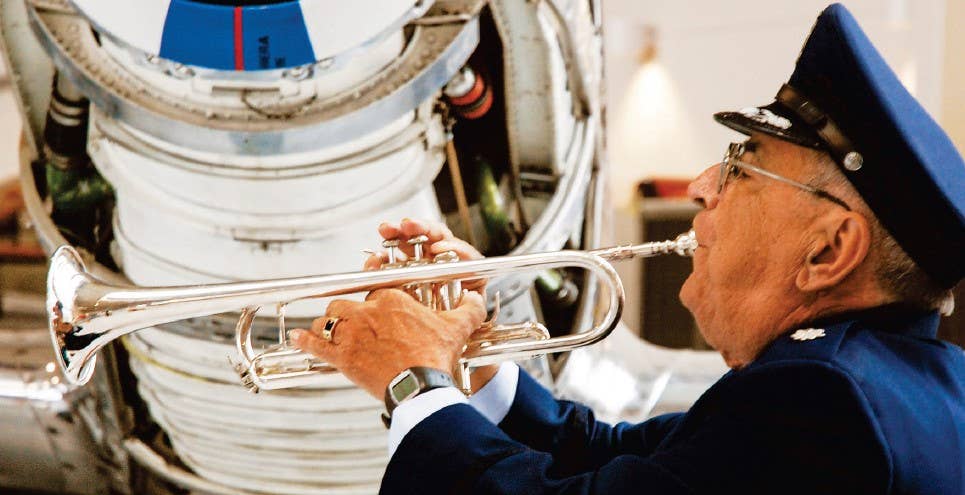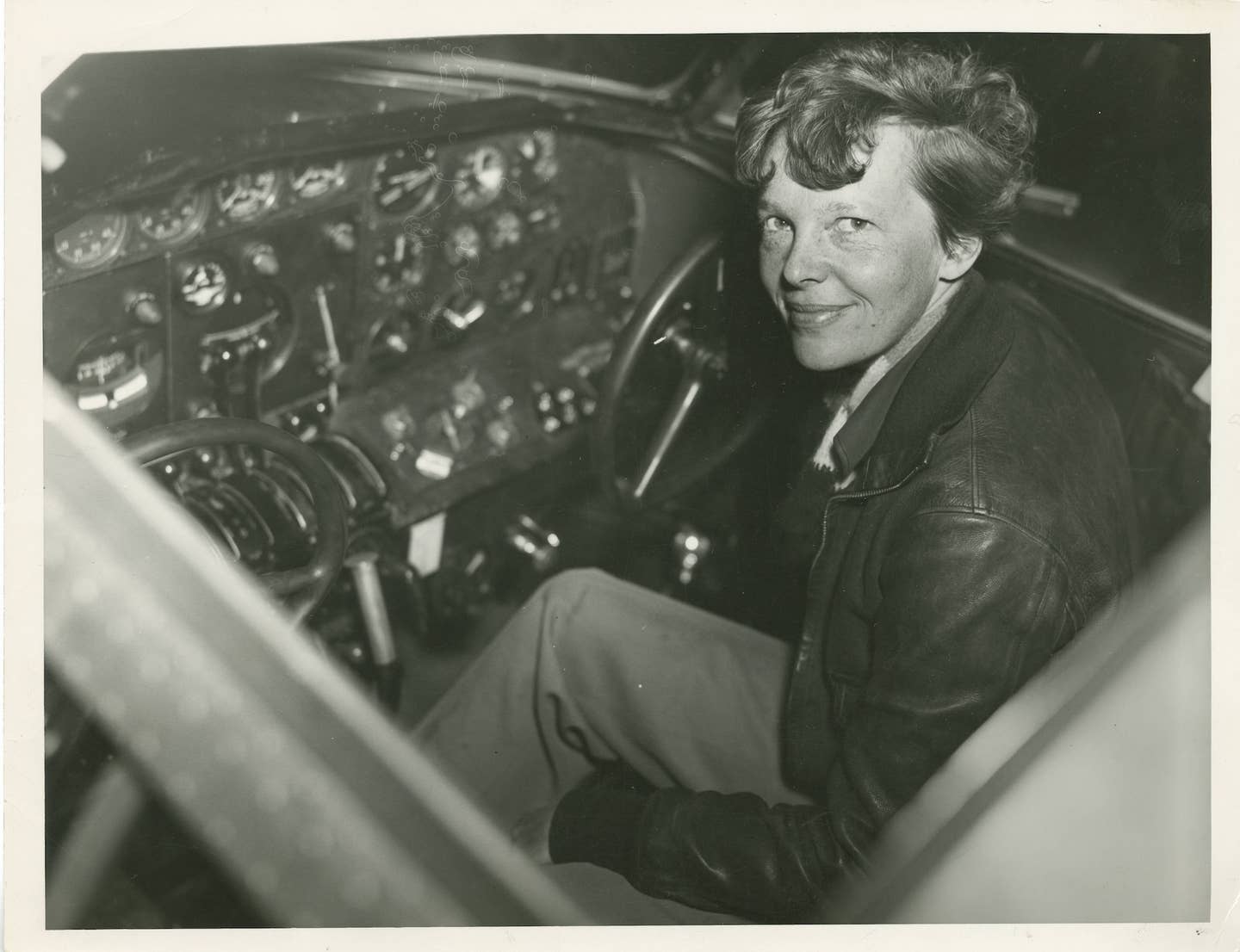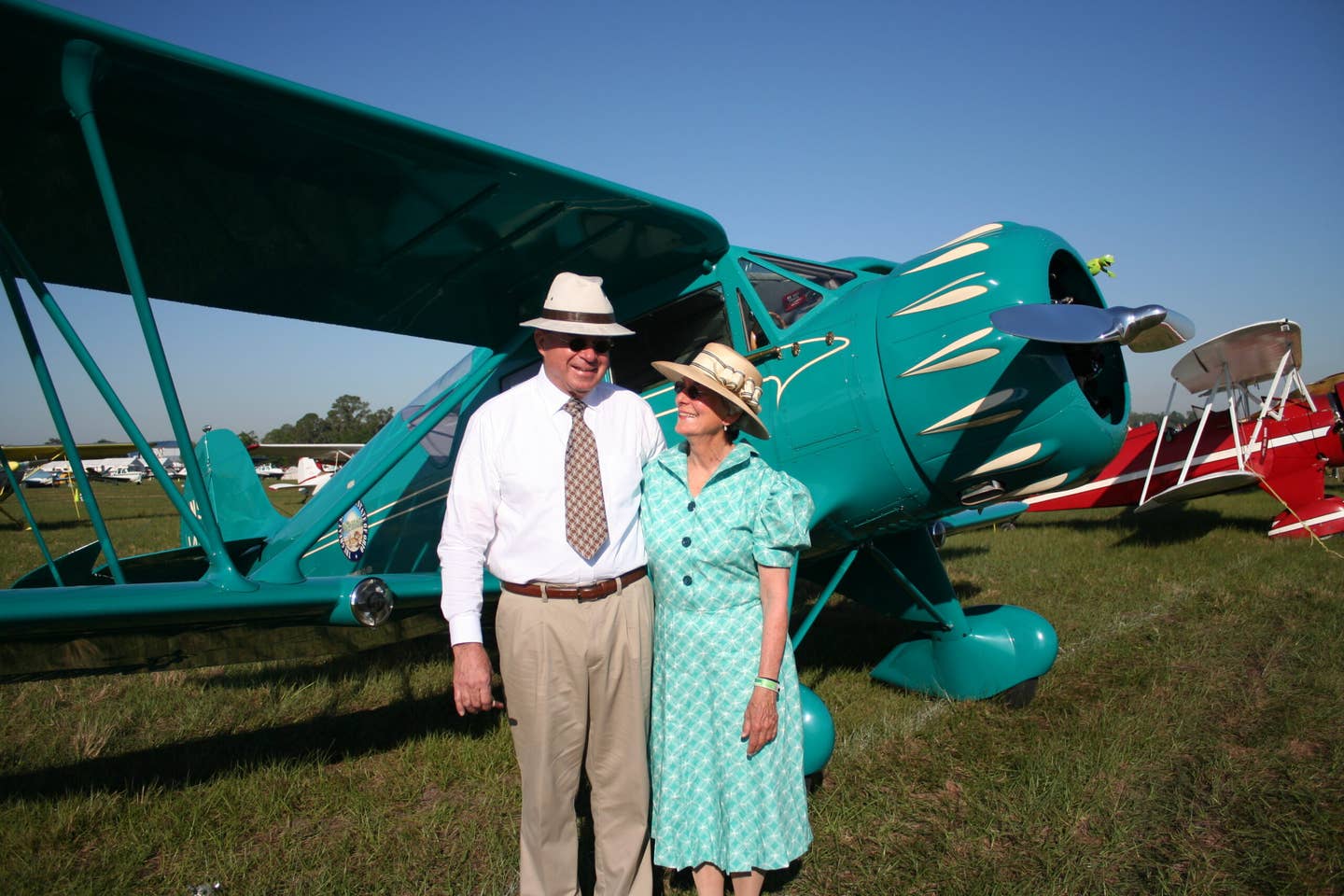
Bayeux War Cemetery is the final resting place for many World War II soldiers. [Adobe Stock]
It was a cool spring evening in Lincolnshire, England, with the last light of dusk fading from an overcast sky, when an Avro Lancaster III pierced the silence with the roar of four Merlin V-12 engines, accelerated down the tarmac at RAF Fiskerton, and ponderously lifted off at 9:36 p.m. At the controls was Bryan Esmond Bell, 24-year-old son of Percy and Marjorie, born and raised in the outer London suburb of Harrow. With him in the thrumming ship were six men, ranging from 20 to 28 years old. It hadn’t been certain the flight would go, for ceilings had lingered at only 100 feet for most of the day, but throughout the evening the weather improved and the mission was on for the 21 Lancasters of Royal Air Force Squadron No. 49. Bryan Bell and the crew of Lancaster ND533 didn’t know it, but they had just left their home soil for the last time.
It was June 9, 1944, only three days after the greatest seaborne invasion in history, and Allied troops clung to a perilously slender strip of French coastline after failing to achieve the bulk of their D-Day objectives. Fighting for their lives against a tenacious and skilled enemy that was beginning to flow into Normandy, the Allied armies were depending on air superiority to slow the stream of German reinforcements. That night, as one of five RAF heavy bombing missions against French rail centers, 108 Lancasters were scheduled to attack the railyard at Étampes, south of Paris. Six aircraft would not return. If their crews didn’t have any particular sense of impending doom, if a milk run to northern France seemed preferable to interminable hellish hours over the heart of Germany, they nevertheless set out across the English Channel with eyes wide open. In five years of war, Bomber Command had absorbed staggering losses of airplanes and men, and Squadron No. 49 had few “old hands” left from the early days.
If you're not already a subscriber, what are you waiting for? Subscribe today to get the issue as soon as it is released in either Print or Digital formats.
Subscribe NowSeventy-nine years later, I happened upon the grave of Bell and four of his crew on a sunny spring afternoon. Set on the modern edge of an ancient Norman town, Bayeux War Cemetery isn’t as pastoral or as beautifully sited as the other Commonwealth, American, or even German cemeteries, but, shaded by blooming chestnut trees and neatly tended with a variety of plants and flowers, it very much has the atmosphere of an English public garden. White marble gravestones evenly spaced in neat rows contain regimental insignia, crosses, crescents, and Stars of David, as well as personal inscriptions from family members.
Amid the geometric perfection, there are several headstones that stick out for being immediately adjacent, with multiple names inscribed. These are all aircrew, and Lancaster ND533 has the greatest number buried together. Flying Officer Bryan E. Bell is joined in death by air gunner F/O Hilary D. Clark, 28; wireless operator/gunner Sgt. John Holden, 21; navigator F/O Duncan MacFadyen, 28, of the Royal Australian Air Force; and air gunner Sergeant Joseph J. Reed, 23. I wondered what happened to the two others and snapped a photo for research.
I had to come to Normandy to tour the landing beaches and battlefields with my father, three brothers, and history aficionado Uncle Mickey. We had enough time to explore many of the sites of lesser-known actions, such as La Fière Bridge, Le Mesnil-Patry, Villers-Bocage, and Hill 112. A lot of the focus on “Operation Overlord” is centered on the landing beaches—bloody Omaha above all—but even there fewer than 1,000 men lost their lives against some 40,000 Americans, British, and Canadians in the furious 10-week Battle of Normandy that followed. When you visit the area, much of it surprisingly little changed since 1944, you understand why. It is a close terrain of hills, vales, and dense hedgerows that strongly favors defense. The Germans made the most of it, fighting skillfully and bravely—fanatically in the case of the Waffen-SS—despite being greatly outnumbered and underestimated by the Allies as “boys and old men.”
The Germans were also aided by technically superior equipment, particularly the Panther and Tiger tanks that took a fearsome toll on the Allies’ relatively light Shermans, Cromwells, and Churchills. This advantage was greatly blunted by the combination of Allied air superiority and Adolf Hitler’s military ineptitude and insistence on total control. The Allies had successfully duped Hitler into thinking Normandy was a feint—that the main invasion would come across the Pas-de-Calais—and he refused to release many of the Panzer divisions that would have posed a major threat to the operation. When they were shifted southwest, slowly and piecemeal, the Allies’ destruction of the French rail network forced the German reinforcements onto the roads, where they were hounded endlessly by the P-47s and P-38s of the U.S. 9th Tactical Air Command and the Hawker Typhoons of the RAF’s 2nd Tactical Air Force. This strategy—the “Transportation Plan”—was what brought Lancaster ND533 to the rail yard at Étampes on the night of June 9 to 10.
This attack was a minor footnote in the annals of Bomber Command, which by this time was regularly mounting night attacks of 500 to 1,000 aircraft deep into Germany. The surviving records indicate the bomber stream formed and crossed into France over Dieppe at 11:15 p.m., and opposition on the inbound leg was light. The preceding de Havilland Mosquito path-finders successfully located and marked the target, and the bombing run commenced. The initial wave of bombers were on target, but then the bomb line started to wander, resulting in the destruction of some 400 civilian homes. Lancasters orbited while the “Master of Ceremonies” sorted things out, and German defenses were fully alerted by the time ND533 turned for home just after midnight. Awaiting in the darkness was the Ju-88R piloted by Hauptmann (Captain) Heinz-Horst Hißbach of Nachtjagdgeschwader 2 (2nd Night Fighter Wing). The night fighters and the flak of the Germans’ formidable FLAK-36 88 mm anti-aircraft cannon were the twin scourges of Bomber Command, and together with a third enemy, the weather, ensured a staggering 44 percent of RAF bomber crews from 1939-1945 lost their lives in the fight. Hißbach was a skilled pilot who would go on to command NJG 2 and amass 30 claimed kills before being killed himself in the final month of the war while strafing an Allied column. His fighter was equipped with a FuG-202 Lichtenstein UHF radar set, so it is likely that the crew of ND533 had no idea he was there until it was too late. At 12:38 a.m., Hißbach attacked the Lancaster with cannon fire, and it was shortly thereafter seen dropping out of the bomber stream in flames. Several villagers in the vicinity of Rosay-sur-Lieure were awake and observed the Lancaster crashing 2 kilometers north of town. They arrived the next morning, sifted through the wreckage, and collected six bodies for burial. Five of these were eventually exhumed and transferred to Bayeux War Cemetery; the sixth, flight engineer Sergeant Sidney C. Holmes, 28, is buried in nearby Marissel French National Cemetery.
The fate of the seventh crew member is interesting and quite sad. Bomb aimer F/O Philip D. Hemmens of Essex, 21, successfully bailed out of ND533 before it crashed. This was much rarer in Lancasters than other types because of the small size and placement of the escape hatch. Hemmens was sheltered by a local member of the French resistance, Huguette Verhague, along with four other airmen but was betrayed by a German collaborator and handed over to the Gestapo in Paris on August 9, only two weeks before liberation. With the collapse of the German front, 168 Allied airmen, including Hemmens, were shipped east to the notorious Buchenwald concentration camp on August 15 through 20. For two months they experienced a small sample of the horrors the Nazi regime was inflicting on Jews, Roma, homosexuals, the disabled, political prisoners, and other “undesirables.” Eventually, the airmen were transferred to a regular POW camp, but it came too late for Hemmens. He died on September 27 owing to medical neglect after seven days of rheumatic fever and sepsis stemming from injuries sustained during the bailout. His remains were never recovered.
Having learned something about the crew of ND533, I decided to find the crash site and was able to do so the morning before I flew back to the States. It rests just inside a small wood surrounded by rolling farmland, a few kilometers west of the picturesque half-timbered village of Lyons-la-Forêt. A short path leads to a granite plaque with a French inscription erected in 2010 to replace the simple wooden cross the villagers had placed on the site in 1944. Two of the Merlin engines were also excavated—their craters are still visible. This is a peaceful, shaded place filled with birdsong. After a week spent visiting places where men fought, suffered, and died in the struggle to free Europe from the grip of fascism—and where even more died in the service of the Nazi regime—this is a place for quiet reflection.
We are nearing 80 years since the end of the cataclysm of World War II, and only a handful of those veterans are still with us. I fear the conflict—and its sources and lasting repercussions—is becoming increasingly abstract, something that happened long ago to grainy people in black-and-white films. As a pilot, pondering the fate of individuals like Bryan Bell and the young airmen of ND533 helps make the cost of WWII relatable. The war in Ukraine shows that propaganda, dictatorship, and aggressive militarism remain a threat even today. Many recent events demonstrate the renewed temptations of political extremism, intolerance, and demonization of “the other.” In such times, it is important to remember the high price paid by so many the last time such feverish currents ran rampant, and for each of us to vow to do whatever we can to prevent their reoccurrence.
This article first appeared in the August 2023/Issue 940 print edition of FLYING.

Subscribe to Our Newsletter
Get the latest FLYING stories delivered directly to your inbox







